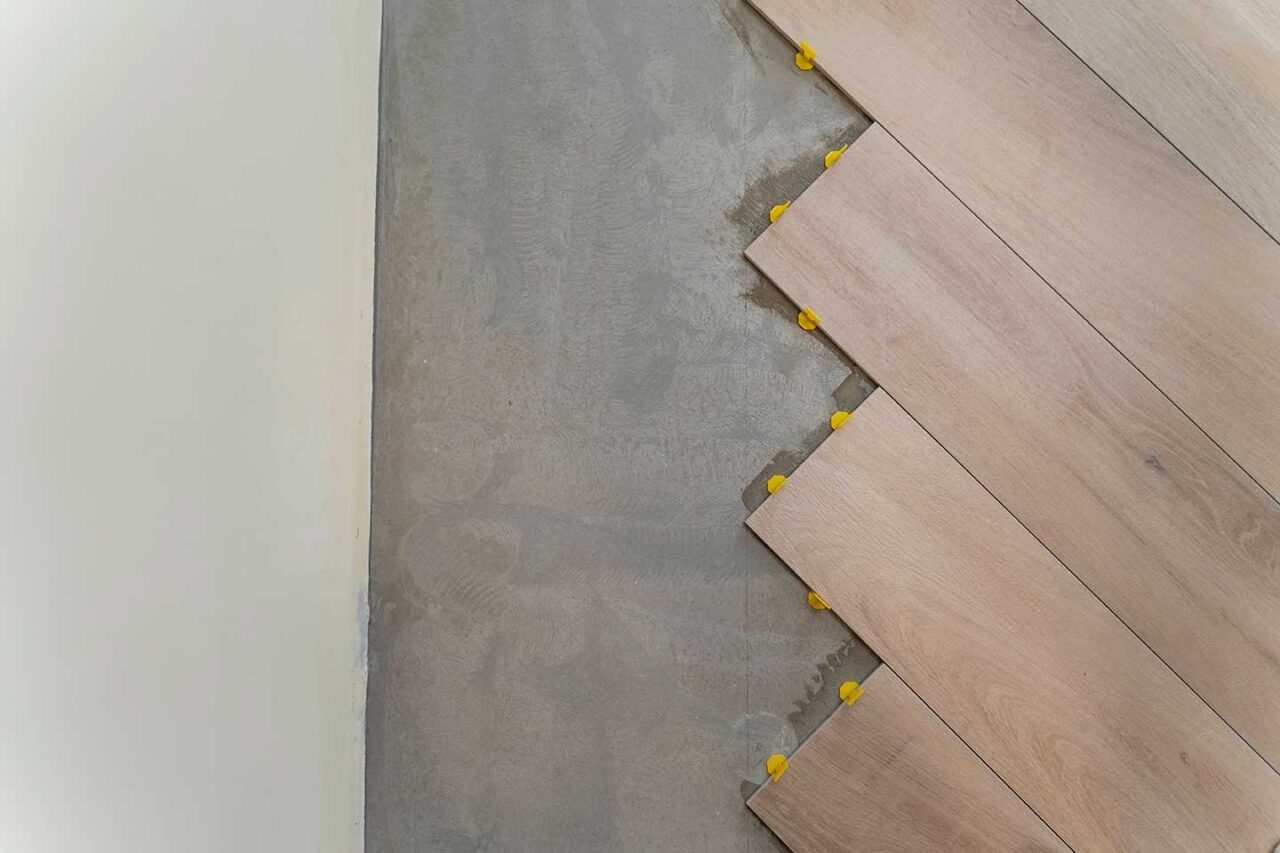Vinyl flooring has gained recognition as a flexible and budget-friendly solution for home remodeling, especially in areas prone to moisture, such as kitchens and bathrooms. Its robustness and ability to repel moisture have contributed to its widespread use. Additionally, a noteworthy advantage is that it frequently permits installation over pre-existing flooring materials, leading to savings in both time and expenses that would otherwise be spent on extensive removal processes. This extensive manual will delve into vinyl flooring, its compatibility with various subfloor types, and the essential considerations for achieving a smooth and enduring installation.
- The Allure of Vinyl Flooring
Its versatility extends beyond aesthetics; it’s easy to clean, comfortable underfoot, and, importantly, budget-friendly.
- The Substrate Selection Process
Choosing the suitable substrate or base for your vinyl flooring installation is paramount.
2.1 Sturdiness and Condition
The existing flooring must be sturdy and in good condition to serve as a suitable substrate for vinyl. Before proceeding, thoroughly inspect the current floor for any signs of damage, rot, or structural issues. If there are doubts about its condition, addressing these concerns is advisable before proceeding.
2.2 Seam Considerations
One of the critical aspects of substrate selection is the presence of seams. Vinyl flooring is known for creating a smooth, continuous surface. Therefore, assessing the number and size of seams on the existing floor is essential. Fewer seams or tightly seamed flooring materials are generally better candidates for vinyl installation. If the current floor has numerous seams, consider alternative solutions or consider using an underlayment.
2.3 Imperfections and Surface Preparation
Being relatively thin and flexible, Vinyl flooring is less forgiving regarding substrate imperfections. High spots should be sanded down, and low spots must be adequately filled to ensure a level surface. While minor imperfections might not immediately affect the vinyl’s appearance, they can become more noticeable over time.
2.4 Surface Embossing
Some flooring materials, like tile, laminate, and vinyl, feature surface embossing. This textured look can enhance the floor’s appearance, resembling natural materials such as wood or stone. However, excessive embossing can potentially telegraph through to the surface of the vinyl. This is a crucial consideration, especially with thinner vinyl flooring options.
2.5 Moisture Concerns
Moisture significantly threatens vinyl flooring, potentially causing issues like mold, mildew, and long-term damage. Therefore, it is paramount to guarantee that the substrate is completely dry and free from any moisture-related concerns. This is particularly critical when working with concrete flooring, as confirming that the concrete has undergone proper curing and thorough drying before installing vinyl on top is essential.
2.6 Height Compatibility
Vinyl flooring generally adds minimal height compared to other flooring types. Still, it’s essential to assess whether the increase in height will be compatible with doorways, transitions to other rooms, and any appliances or fixtures.
- Types of Substrates Suitable for Vinyl Flooring
Now that we’ve explored the critical factors to consider when choosing a substrate, let’s take a closer look at the types of existing flooring materials that can serve as suitable bases for vinyl:
3.1 Concrete Flooring
Concrete is a solid and durable substrate for vinyl flooring. It offers a stable foundation for vinyl, and its resistance to moisture makes it an excellent choice, especially in basement applications. However, as mentioned earlier, ensure the concrete is fully cured and dry before proceeding with the vinyl installation.
3.2 Laminate Flooring
Laminate flooring can be considered a substrate for vinyl, but there are a few caveats to remember. Laminate floors can swell when exposed to moisture, so it’s crucial to address any high-moisture areas before installing vinyl. Additionally, if your laminate flooring is of the floating variety (not glued down), removing it rather than installing vinyl over it might be more advisable for better results.
3.3 Vinyl Flooring
Vinyl flooring can indeed be installed over existing flooring. This option provides a smoother and more straightforward installation process since both materials share similar characteristics.
3.4 Solid hardwood flooring in the section
Solid hardwood flooring in section flooring can serve as a substrate for vinyl, but it comes with specific considerations. It may not be an ideal substrate if your hardwood floor has significant gaps or is prone to cupping or swelling due to moisture. In such cases, an intervening underlayment might be necessary to create a suitable surface for vinyl installation.
3.5 Engineered Wood Flooring
Like solid hardwood, engineered wood flooring can serve as a substrate for vinyl. However, like solid hardwood, addressing gaps, cupping, or swelling before installation is essential. An underlayment may be required to achieve a smooth and stable surface.
3.6 Ceramic or Stone Tile
Installing vinyl over ceramic or porcelain tile is possible, but it comes with some conditions. If the grout lines between the tiles are thin, vinyl can be installed directly over the tile.
- The Role of Underlayment
Underlayment becomes crucial in many vinyl flooring installations, especially when dealing with less-than-ideal substrates. Underlayment is an additional layer between the substrate and the flooring to enhance the installation’s performance and longevity.
4.1 Types of Underlayment
Underlayment materials vary, but some standard options include plywood, MDF (Medium-Density Fiberboard), and specific underlayment products designed for vinyl flooring installations. The choice of underlayment material depends on your project’s specific requirements and the existing substrate’s condition.
4.2 Benefits of Underlayment
Using underlayment offers several advantages:
- Strength: Underlayment materials like plywood provide additional strength to the floor, ensuring it can withstand daily wear and tear.
- Seam Reduction: Large-format underlayment sheets result in fewer seams, creating a more seamless surface for the vinyl.
- Smoothing Imperfections: Underlayment can bridge over small holes, imperfections, and surface embossing on the substrate, creating a smoother surface for the vinyl.
- Moisture Barrier: Some underlayment products come
FAQS
Can you install vinyl tile yourself?
Indeed, you can install vinyl tile yourself as a DIY project. Vinyl tile installation typically involves adhesive or peel-and-stick tiles, making it accessible for homeowners with basic DIY skills. However, following the manufacturer’s instructions is crucial, ensuring proper subfloor preparation and paying attention to alignment and spacing for a successful and durable installation.
Should vinyl tiles be glued down?
Yes, it’s advisable to use adhesive for a secure and stable installation. Adhesive ensures that the tiles bond firmly to the subfloor, preventing issues like shifting or curling over time. Proper adhesive application is crucial to the longevity of your vinyl tile flooring.
How do you lay vinyl tiles?
Laying vinyl tiles is a straightforward process. Prepare the subfloor, ensuring it’s clean, dry, and smooth. Find the center of the room, apply adhesive, and start placing the tiles according to your layout plan. Press them firmly for good adhesion, use a roller to remove air bubbles, and finish by trimming the edges for a neat fit. This completes your vinyl tile installation.
Is vinyl tile easy to install?
Yes, vinyl tile is generally an easy installation option, especially for DIY enthusiasts. Many vinyl tiles come with convenient peel-and-stick or click-and-lock installation methods, making them accessible for homeowners. However, achieving the best results may require careful subfloor preparation and attention to detail during installation. Overall, it’s famous for those looking for a straightforward, manageable flooring option.


